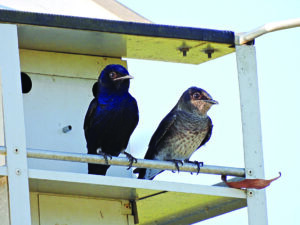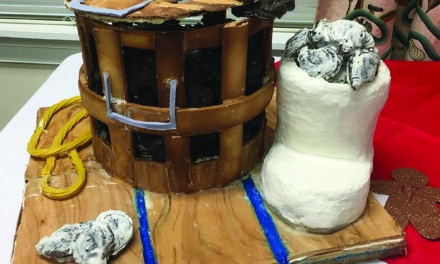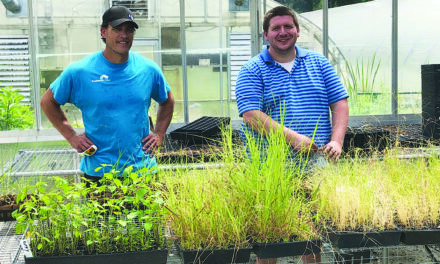
Purple Martins are native songbirds from the swallow family and can be a joy to behold as they dip and dive like bats, chirping and clicking happily. Males are a stunning blend of black, dark blue, and dark purple that gleam iridescent in the sun.
Each spring, without fail, Purple Martins return to this region for the spring and summer.
These native songbirds in the swallow family are a joy to behold as they dip and dive like bats, chirping and clicking happily. Males are a stunning blend of black, dark blue, and dark purple that gleam iridescent in the sun. Females are a tawny beige with black speckling on their belly and dark purple feathers on their head, wings, and tails. They spend the winter in South America and migrate to North America for the summer for the breeding season.
The Purple Martin Conservation Association offers an interactive scout report map on their website, http://purplemartin.org that can be very helpful in predicting their arrival.
East of the Rocky Mountains, Purple Martins are entirely dependent on housing provided by humans. Their presence was encouraged by Native Americans who hung up dried gourds for them to nest in. The best way to attract Purple Martins is to put up housing in a wide-open area, preferably near a field or water source. They like to have a clear flight path that provides easy access to their house. Keepers of Purple Martins, known as landlords in the birding community, can choose from two forms of housing: a house with multiple “apartments” or gourds that hang on a rack. Whichever option you choose, be advised that the housing must be 12 to 18 feet from the ground. Telescoping aluminum poles make raising and lowering the housing easy, which will be necessary in order to monitor for competitor nests, keep track of how many chicks hatch, and clean out the apartments at the end of the season.
Scouts, adult males looking for housing, will arrive in early March. About four to six weeks after their arrival both male and female martins will work together to gather twigs, straw, and pine needles to construct their nest. They will also build a mud dam near the entrance to their apartment. Just before they lay their eggs they will put down a layer of green leaves, perhaps to help keep the nest clean, regulate the temperature, or act as a natural insecticide. Females will lay an average of four to six bright white eggs that will take 15-16 days to hatch once incubation begins. About 22 to 32 days after hatching, the chicks will become fledglings, and their parents will look after them for about two weeks after they leave the nest. As summer wanes Purple Martins will usually begin their migration to South America around September, flying thousands of miles to Brazil and neighboring countries.
Many people believe that Purple Martins provide mosquito control, but the truth is that mosquitoes make up just a small percentage of their diet. Mosquitoes are most active at night, whereas purple martins feed during the day.
They enjoy eating moths, beetles, dragonflies, wasps, and flies.
For advice on how to establish a colony of your own and support these beautiful birds, visit purplemartin.org, allaboutbirds.org, audubon.org, or your local bird club.





